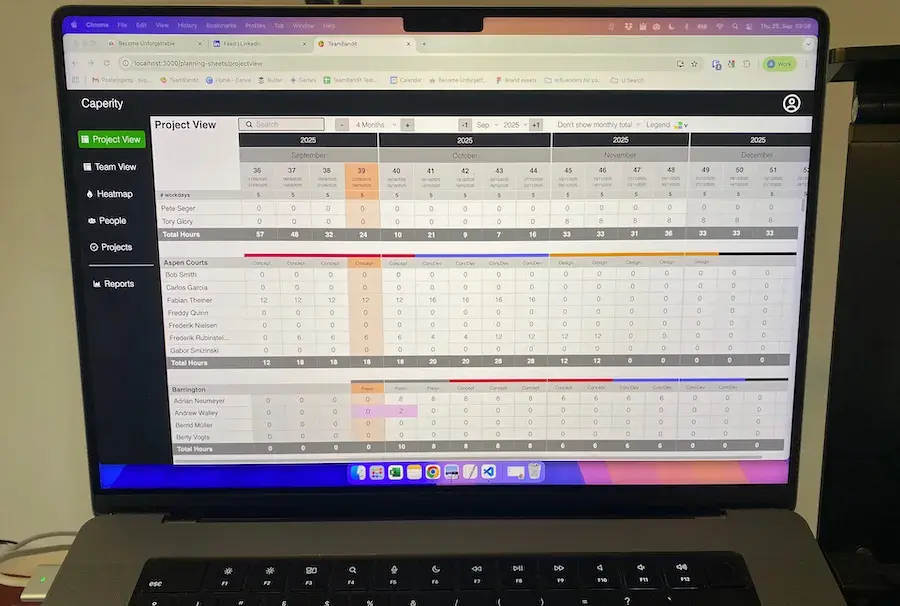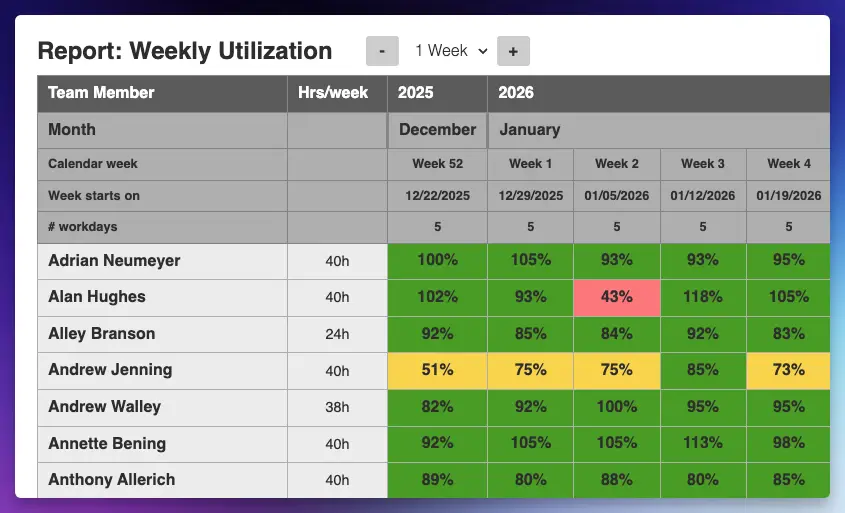If you have been appointed to lead the implementation of the project management office (PMO) in your organization, you are surely a valued team member.
This is a great opportunity, but it comes with the heavy challenge of selling the benefits of a PMO to your management to get their support.
A quick Google research on PMO benefits will give you various lists of the “top PMO benefits”. And I will also give you my list of the 8 most impacting PMO benefits from my extensive experience implementing PMO systems.
However, the critical part is how to sell those benefits to the two most important clients in the organization: The CEO and top management as well as to the functional and department managers.
This article intends to guide you on how to present and sell the PMO benefits so that you win the full support of top management and functional managers for your PMO implementation plan.
The 8 most impacting PMO benefits
The following are the proven PMO benefits I have observed during my practice implementing PMO systems.
Some of these benefits coincide with the usually reported benefits in the PMO in literature. Some PMO benefits may be intangibles, such as quality compliance or safety compliance. But most of them can be related to some sort of cost reduction, improved efficiency or asset utilization that delivers an improved process or a positive impact in the business bottom line.
- Business Process Mapping
- Identification of Best Practices – Standard of Operations (SOP)
- Enabled Project Portfolio Management (PPM)
- Improved Business Metrics
- Team Empowering and Accountability
- Improved Communications
- Improved Operations Capability
- Governance
Benefit #1: Business Process Mapping will uncover bottlenecks in your current processes
As part of the PMO implementation, the PMO team will conduct a thorough review of how things are done now inside the company.
The summary of these findings, complemented with diagram forms, is the current business process map. It allows management to visualize the flow of information and the components that make up the product or the service provided.
This cross functional exercise will clearly uncover stagnant stages and places where duplication occurs that contradict the desire of cost control for efficiency.
The project team will then produce a new business process map that shows the desired improvements, over the current process, thus serving as the integrator tool for all activities in the new way of doing things.
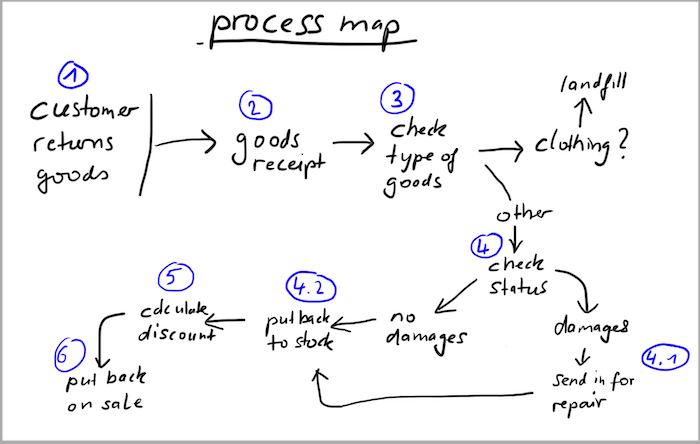
The new business process map will help identify which department procedures to improve to produce a desired functional benefit. A benefit that will also impact the company’s bottom line.
The PMO implementation leader can use the new business process map to work with finance and operations management to quantify the impact of every improvement to be implemented. This is a solid approach to help estimate the ROI of the PMO implementation proposal.
Benefit #2: Use best practices and establish Standards of Operation (SOPs)
The new business process map will lead the PMO team to conduct a thorough review of the current procedures to identify the bottlenecks, stagnant procedures and duplicated tasks that prevent the efficient flow of the business.
In combination with a lessons learned document, a set of best practices will emerge that eliminates the bottlenecks in your business processes and expose duplicated tasks, thus improving the overall efficiency of your resources available.
Best practices are like lubricant oil to the business process engine. The impact of these best practices on department operations can be quantified and linked to the overall business strategic goals with the help of the financial department.
Here’s an example: A best practice that reduces wasted raw material, labor cost or the amounts of utilities (water and electricity) will produce functional gains and improved financials at the business bottom line. Those can be credited to the best practices brought about by the PMO implementation.
Read our guide for conducting lessons learned workshops
Benefit #3: Enable Project Portfolio Management (PPM)
The business process map combined with the best practices present a much better business picture to Senior Management. Because they can now see the interaction of functions inputs and outputs that lead to business results.
Therefore, senior management is now in a better position to take strategic decisions. And this is critical to enrich the business portfolio management process.
This better information reduces risks and helps prioritize the relevant business items in alignment with the overall business strategies. The above two PMO benefits support better management decision-making by presenting a wholistic view of the business units and operations working as an integrated system, as depicted in the “new business process map”.
Any changes on inputs and/or process can be visualized and even quantified thus reducing the business risk significantly. Priorities have clear consequences once the output of the business process is better understood, thanks to PMO dynamics.
Benefit #4: Improve business metrics
PMO implementation guides senior management to establish meaningful business metrics from the operations and financial perspectives to assess the PMO contributions to margins and profits.
In addition to the traditional indicators, such as percent of projects completed on time and on budget, a PMO (project management office) allows senior management to receive additional valuable information regarding inputs, process operations and outputs with not only data reporting, but complemented with data analysis.
Information on the correlation between business and process variables acquire more meaning that empowers decision makers to see the causality and correlations of process events and outcomes, thus rendering more prediction and control capability about the outcomes of decision making.
benefit #5: Team empowerment and accountability
The visualization of the new process map and the impact of the work done allows the project teams to understand the WHAT and WHY of their actions.
This is true empowerment of the project team participants, which in turn, lays the ground for a comprehensive review of assignments and accountability. How can one reject what is clearly a motivating mission to accomplish? The impact of the actions done is much better defined thus making accountability visible throughout the organization.
Benefit #6: Improved communications
Once the new PMO’s business process system is understood and once the sense of empowerment permeates the project team, there is a common background for improved communications.
Everyone knows what the project manager is talking about, what the expected benefits are. There are no blind spots for excuses. Team members are now dynamic participants of the business through the PMO organization.
Communications have a common background on the new business process maps, via the best practices and focused on the defined business strategic goals as the ultimate goals to achieve.
benefit #7: Improved operations capability
The capabilities of the project teams unfold under the PMO environment because there is a synergy of efforts around common goals to resolve clearly agreed problems identified in agreement with functional managers.
The exercises of creating the new business map, combined with better practices lead to the removal of misunderstandings and operational bottlenecks that eventually liberate abundant creative energy. As a result, the operational capability of departments and functions increase significantly resulting in improved functional metrics.
Benefit #8: Governance – finally!
All the above benefits of PMO implementation lead eventually to the most important impact: PMO provides SOLID BUSINESS GOVERNANCE. It provides senior management with the criteria to set the “direction” and the “speed” of the business, in the same way a sailboat is guided by the rudder at the stern and the position of the sails, adjusting them according to the blowing business winds. The PMO helps the organization to adapt to changing business needs and circumstances.
So, how do you sell these PMO benefits?
You may be researching the approach to sell the benefits of a PMO to management to get their needed support. Although it is already known that in general a Project Management Office brings benefits to organizations, the cost, timing, and effort required may vary significantly from business to business.
PMO literature also reports cases where some organizations have even decided to stop the PMO implementation efforts for considering that the benefits do not show up as intended by the investment. Or perhaps because a PMO has complicated matters in the organization instead of solving the problems intended to resolve.
There is plenty of room for a misunderstanding of what a PMO benefit really is.
We will clarify then the PMO benefit concept and its approach to justify them to management.
What is a PMO benefit?
The first step is to make sure the concept of “benefit” means the same to the parties involved: Senior management and the PMO team. Although it looks obvious, this lack of clarity of meaning and intention is the usual source of serious misunderstandings that eventually lead to loss of management support to the PMO project.
From a systems point of view, the concept of “benefit” is conceived as an improved expected outcome from inputs into an established processing system – assumed to be understood – when changes are made in the inputs or processing or both simultaneously.
PMO benefits selling: How to influence the perception of benefits
Since organizations have their own unique inputs and processing systems, the delivered outcome (product or service) or benefit expected may vary significantly depending on the organization’s characteristics and expectations.
The perceptions of PMO benefits by top management and by operations and functional managers have a decisive impact on the final support for the PMO implementation plans. Top management tends to see the benefit to the overall business activity (defined by financial metrics). Functional managers may judge the benefit by the impact on their functional deliverables (usually defined by operational metrics).
Functional Managers have the most potential to impact the PMO implementation and therefore clear communications with them are of paramount importance.
It really matters from what perspective a “PMO benefit” is considered. It is recommended to present the impact of PMO benefits to management using the systems approach indicated below.
Remember that functional managers are focused on operational aspects that impact their functional management metrics while top management and financial managers will focus on the financial metrics linked to the bottom line and the overall business priorities.
Consider using adaptations of the graphical examples below to clarify the location of the PMO improvement and the type of impact on operations and or final finances. The following diagrams are examples that can be adapted to explain a particular benefit. Consider de following cases:
Current Scenario A: Consider the current situation of an organization, where Inputs A are processed in accordance to a current Processing System A to produce the Current Output A, as the basis of reference. The red line envelope indicates the current way of running the processes. The current Process System A is operating under given functional metrics that yields a current Business Output A.
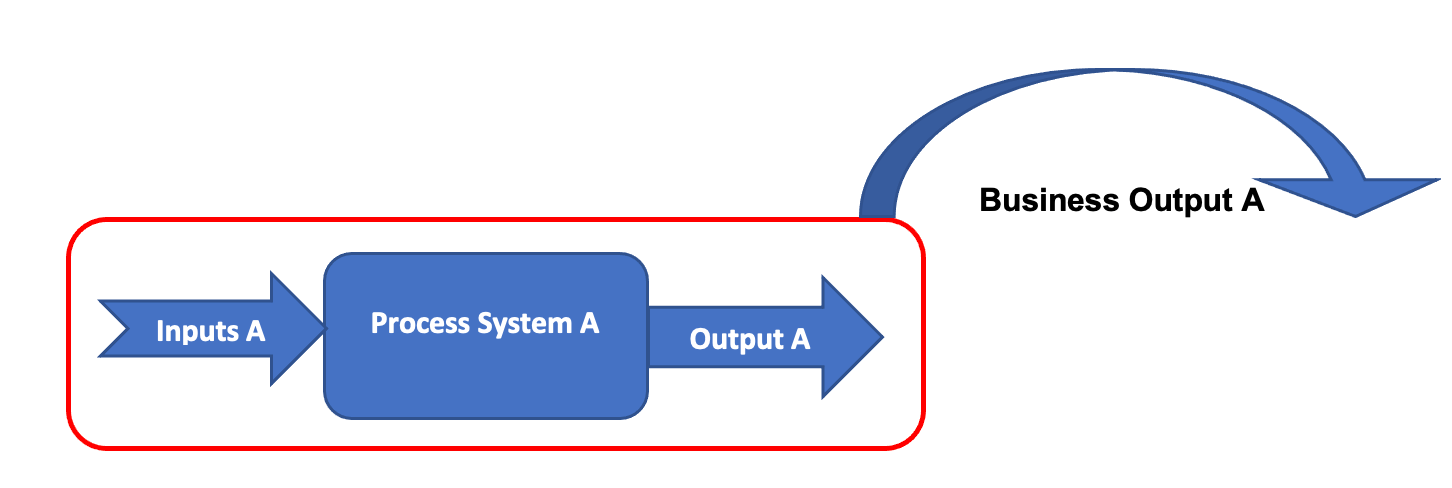
Then, let us assume that the implementation of a PMO leads to a change to an Improved Case B1:
Improved case B1: Now there is an improved Process System B with the same Inputs A that results in an improved Output B. The green envelope line represents the Improved way B of doing things. It happens that the improved Process System B, not only improved the Output A to Output B. But it also produced an improved Business Output B1 in the overall business activity. In this case, the “PMO benefit” has impacted the operations of the Processing System (functional benefit), but also the overall business output (the financial bottom line).
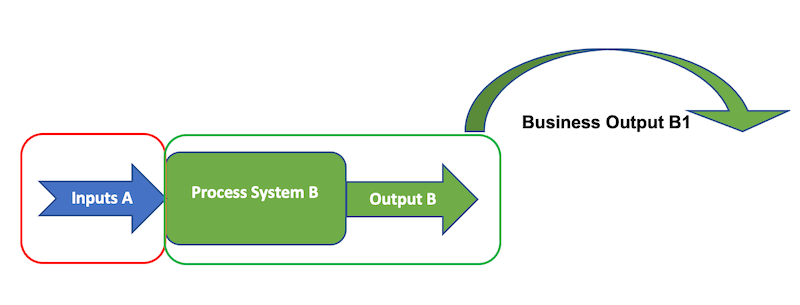
As an example, this would be the case when the new PMO system has implemented a better system for cleaning and sanitization of the production lines that have reduced cleaning and changeover time in the factory, from 2 hours to 45 minutes, thus indirectly increasing the capacity of the plant by 15%.
As a result, the cost of each product unit has also been reduced by 5%, for instance. This PMO improvements have impacted the manufacturing process capability and the product cost reflected in the business finances.
Improved case B2: In this variant case, the improved Process System B also produced an improved Output B while still using the same Input A as in the previous Case B1. But it did not produce an overall improved Business Output since the Business Output A is the same as in the reference case of the current situation. The PMO improvement was localized within the processing functional area denoted by the green envelope only.
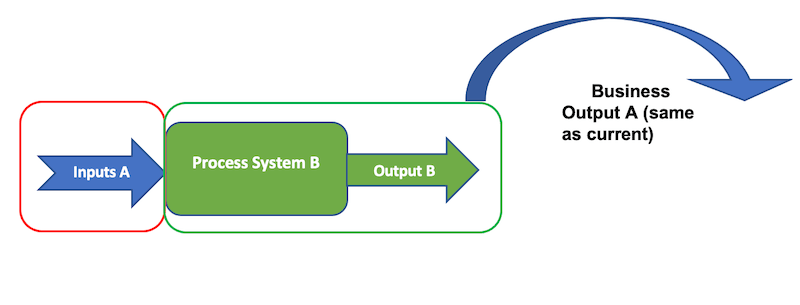
As an example, this would be the case when the PMO has implemented a robust in-process quality monitoring system in the plant that requires more frequent product sampling and laboratory analysis combined with instruments installed in the process lines.
Now the plant operates in full compliance with corporate quality assurance guidelines. But the benefit has not transcended to the businesses’ bottom line. The functional quality manager will see an operational improvement, but the financial manager will see a different picture, perhaps even an increased operating cost.
As you can see, a PMO benefit then may be localized within the business functional unit. Or it may continue to impact the overall business bottom line. It is imperative to clarify to senior management the localization of the benefit and the potential value of the benefit in as much as possible, preferably with the support of financial management.
A clear agreement of the scope and the potential financial impact of the PMO benefits will assure the support from top management and functional operations managers to succeed in the PMO implementation.
PMO implementation strategy: Communicate your plan clearly
Therefore, Implementing PMO is not about inventing something new but about thinking and acting differently. The PMO will be the coordinating body that supports project management practices.
The PMO implementation leader must assess the impact of every claimed PMO benefit at department or functional level (localization) and its impact on the business bottom line. These claims must be included in the communications plan for PMO implementation for discussion and agreement with top management and functional managers.
The intention of implementing a PMO is to maximize the potential use of the organization’s resources to optimize the strategic business benefits defined for functional structures and for the entire company.
The PMO implementation leader has previously met with all managers impacted (financial and operations) to clarify their expectations in view of the problems they want to solve within their business units. The PMO implementation leader will include an action plan that accurately responds to the needs of functional managers in alignment to their business goals.
If the PMO starts in a particular functional department or section of the business (Quality Control, Supply Chain or R&D), it is still beneficial to extend the survey and communication of the PMO Plan to other sections of the business beyond the targeted section. Because it will help to understand the connectivity between business units and how the outputs of one area may impact or interconnect to the inputs of other sections.
In addition, this exercise will provide a good ground for improved relationships and communications with all business units potentially impacted by the PMO implementation.
Fully Engage Functional Managers During PMO Planning
Functional and operational managers play a critical role in the implementation of PMO. Because they have great influence on the day-to-day operations. The leader of the PMO implementation cannot overlook this fact of life in business operations.
The CEO and top managers (especially financial managers) have clear expectations from PMO that may differ from the perspective from functional and operational managers, although they all are aligned toward the same top business strategic goals.
Targeted PMO Benefits must be structured and presented from the point of view of functional managers, operational management and business strategists. In such a way that there is a common thread of benefits that builds toward the overall business strategic goals.
The leader of the PMO implementation must use the corresponding appropriate language at each level of management to explain the proposed “PMO benefits” in the new way of doing things as per the proposed plan.
Functional Managers also read articles about PMO benefits. And they have a clear focus on their needs. Therefore, the PMO implementation leader must get acquainted with the perspectives from the clients. And understand what is important for them and what they are looking for specifically. This is an important attitude that will allow you as the PMO implementation leader to ask the right questions to management to create the needed trust.
For instance, the R&D manager may want to know how the PMO implementation is going to boost the innovation effort to fill the new products pipeline. It is about achieving their functional goals.
The PMO implementation leader must then be familiar with the details of the R&D process (stage and gate), the current R&D bottlenecks and the delay and the costs associated.
A conversation under this framework is more likely to gain the support of the R&D manager to implement the PMO. Likewise, the PMO implementation leader must reach agreements with all functional and operational managers involved so the PMO benefits considered make sense to each of them.
“BENEFITS of PMO” on themselves cannot be generalized. The PMO benefits are particular to each organization within the context of their inputs to their existing “processing systems”.
The leader of PMO implementation must be well acquainted of those processing systems operating in the business. This is only possible by understanding how the new business process map evolved from the current business process map that was analyzed by the cross-functional project team. The PMO implementation leader must be thoroughly involved in such a process from the beginning.
PMO Success or Failure: It is the business results that matter
Many articles report a list of PMO benefits, such as: Improved visibility, aligned projects around the business strategy, standardized project management methodologies, project categorization, improved communications etc. However, rarely they explicitly explain where they are localized within operations or how the benefit correlates to the bottom-line finances.
The PMO implementation leader must always look at those benefits from the points of view described because, in the end, the success of the PMO system will be gauged by management from their own perspectives.
At the end, Top Management will look for the overall business improvements brought about by PMO implementation, therefore it is imperative to link PMO benefits to bottom-line metrics, as much as possible.
Take for instance the claimed PMO benefit of standardized project management methodologies. Are they the result of implementing PMO or have they required inputs to be in place for the PMO to function properly? Are these improved functional operations only? Or do they lead to both functional and economic improvements? The degree of detail of the answers will greatly influence the degree of support from management. The PMO leader needs to draw meaningful data, with the support of the financial department, to produce the convincing data analysis to obtain the needed management support.
Conclusions
The intention of implementing a PMO is to maximize the potential use of the organization’s resources to optimize the strategic business benefits, defined by operations and financial business metrics.
The most important impact of a PMO Implementation is that it works as an enabler to the mindset change required within the organization to shake the overall structure of inputs and processes to create a new system that allows a reasonable prediction and control of the most important business output: the impact on the business bottom line.
The benefits of implementing PMO are many, but they must be viewed from the overall business perspective. A quantification of PMO benefits linked to business metrics will allow the estimation of ROI for PMO implementation.
Author
-

Gerardo A. Navia is an experienced PMP project manager with solid experience developing and implementing customized technical/business solutions for strategic R&D innovation, NPI/product development, and manufacturing for commercialization. Gerardo has led complex projects to transform ideas into business processes using customized PMO systems for top companies in the US and worldwide. He is passionate about the key role of PMO in the new integrated world. Gerardo has been the PMO strategy advisor of the Tactical Project Manager team.
View all posts
